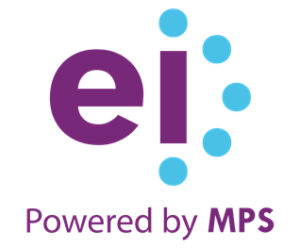Smarter Training For More Secure Skies
Safety and security is the lifeline of aeronautics. Airline companies and provider today encounter a complicated internet of regulatory, technical, and functional obstacles. Training is the cornerstone that maintains crews, passengers, and assets secure, yet frequently it is fragmented, reactive, and inconsistent.
Recent cases, from heartbreaking accidents linked to sustain system mistakes to wheel detachments that required emergency touchdowns, and near-misses caused by fire occasions and drone incursions, highlight the risks. Compliance alone is no more enough. The industry requires smarter, extra durable understanding approaches.
Why Aviation Requirements A Smarter Knowing Method
Regulative Complexity
Aeronautics authorities remain to tighten oversight. In the United States, the FAA has been vocal regarding exhaustion monitoring and duty-hour limits. European regulatory authorities are concentrated on runway safety and incident coverage standards. In The Center East, local hubs are under boosting stress to preserve conformity throughout huge, quickly increasing fleets. Aligning training with these different needs is a substantial challenge.
Safety-Critical Accuracy
Fatigue-related mistakes, upkeep oversights, and runway incursions remain consistent dangers. With the expense of mistake so high, training should go beyond knowledge checks to scenario-based practice that constructs real-world preparedness.
Innovation Improvement
AI-enabled traffic systems, electronic twins, and advanced airplane modern technologies are improving duties throughout trip and ground procedures. Without dexterous upskilling, teams may locate themselves underprepared for the extremely systems they should operate securely.
Functional Efficiency Stress
Limited turn-around routines at busy European hubs or Middle Eastern transit points leave little time for extended training. Airline companies need modular, workflow-friendly services that reduce downtime without endangering rigor.
Arising Risk Groups
From drone incursions in conflict-adjacent zones to cyberthreats targeting navigation systems, the aviation danger landscape is broadening. Training strategies need to advance as promptly as these threats.
Common Training Demands In Aeronautics
Security Training
Safety is the nonnegotiable foundation of aeronautics. Programs have to cover both core and innovative techniques, ranging from emergency situation procedures and emptying drills to situational understanding and event coverage.
Regulatory And Conformity Training
Mandatory courses aligned with FAA, EASA, ICAO, and neighborhood authorities. These consist of recurrent training on duty-hour restrictions, tools checks, and dealing with harmful products.
Maintenance And Design Educating
Hands-on simulations and refresher courses that aid engineers and service technicians identify part tiredness, adhere to assessment methods, and prevent oversights.
Safety And Security And Airspace Safety And Security
With drone incursions and local disputes affecting international airspace, specialized training is vital. Middle Eastern providers, specifically, face expanding demands to address these dangers in fast-expanding operations.
Modern Technology And Equipments Training
Upskilling personnel on next-generation airplane systems, AI-enabled traffic devices, and digital platforms that support efficiency throughout United States and worldwide courses.
Soft Skills And Traveler Experience
Cabin crew and ground personnel benefit from training in communication, problem administration, and social sensitivity, ensuring guest count on and service consistency throughout worldwide hubs.
The Path Forward
In aeronautics, conformity is compulsory, however constructing a society of safety and security and readiness is what genuinely sets durable organizations apart. By buying targeted, role-specific training that resolves safety and security, compliance, exhaustion, upkeep, modern technology, and traveler experience, leaders can ensure uniformity and self-confidence throughout their labor force.
Whether navigating regulative demands in the United States, taking care of complex center procedures in Europe, or scaling fleets in the center East, the mandate is clear: training has to progress to match the speed of modification overhead.
The inquiry is no longer whether to update aviation training. It is how swiftly leaders can act to protect both people and efficiency.
Learn more:
FREQUENTLY ASKED QUESTION
Due to the fact that air travel relies on rigorous adherence to safety methods, continual training, and error-free operations. Without safety, the whole system goes to risk.
Smarter approaches like adaptive training, scenario-based knowing, and simulations ensure employees learn relevant skills, use them in real-world contexts, and retain important safety expertise.
Technologies such as Digital Reality, AI-driven personalization, and mobile knowing give immersive, adaptable, and effective methods to train air travel experts.
They line up training content with international air travel criteria and laws, making it much easier for companies to guarantee compliance while additionally tracking and bookkeeping understanding end results.
Pilots, crew, maintenance personnel, air traffic controllers, and ground employees all gain from targeted, role-specific training that lowers human error and boosts safety.
The future points towards continual, technology-enabled understanding that adapts to advancing guidelines, incorporates data-driven insights, and cultivates a society of safety and security throughout the market.

EI
EI is a psychologically smart knowing experience layout company that companions with consumers in their Digital Improvement trip.
www.eidesign.net